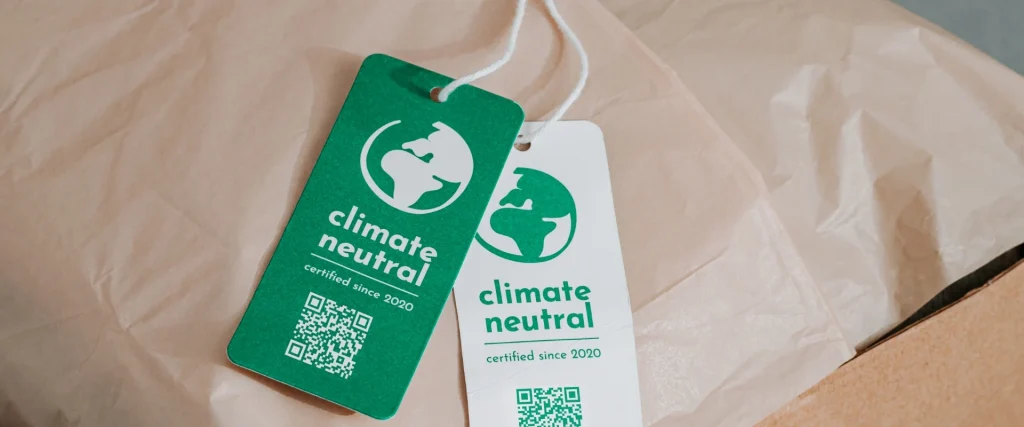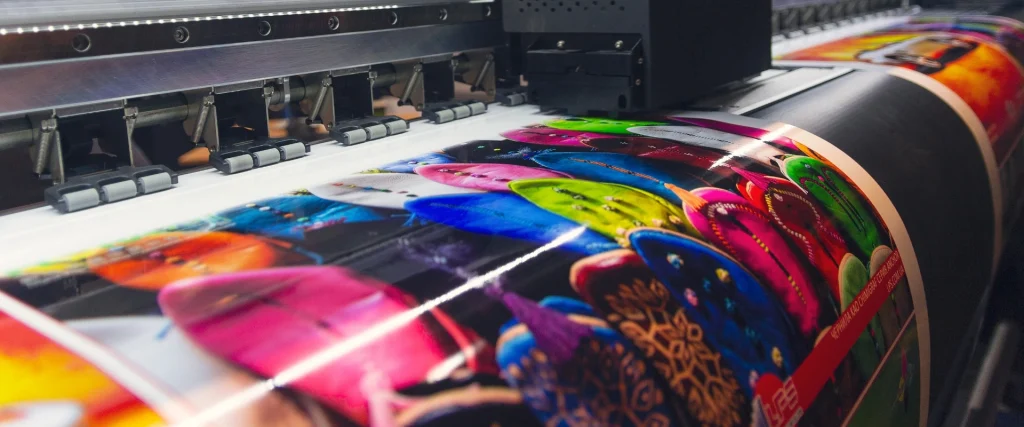Table of Contents
Understanding the Environmental Impact and How to Reduce It
At a time when our planet’s resources are stretched, the call for sustainability has never been more urgent. Every day, mountains of waste grow taller, oceans choke on plastic, and the air we breathe becomes increasingly polluted. Yet, amid this daunting reality, there lies a beacon of hope: the circular economy. Imagine a world where nothing is wasted, where products are designed to last, and where every item we use has a second, third, or even fourth life. This isn’t just a dream—it’s a revolutionary approach that is redefining the way we think about consumption and waste. By embracing the circular economy, we can transform our throwaway culture into one of regeneration and resilience. Join us as we explore this transformative journey and discover how businesses, communities, and individuals can become the architects of a sustainable future. Together, we can turn the tide and build a world where sustainability is not just a goal but a way of life.
As environmental awareness grows, understanding the environmental impact of print solutions and adopting strategies to alleviate it is essential. The print industry, despite the digital revolution, remains a significant contributor to environmental damage through deforestation, energy consumption, and waste generation. This article investigates the environmental impact of printing and outlines effective strategies to support with integrating sustainability into your print technology.
The Environmental Impact of Printing
Before we discuss any ideas to support with sustainability, we need to first identify what elements of your print infrastructure is not sustainable. This ranges from paper to energy, even as far as the fuel consumed to deliver parts for your machines. So, let’s get into it.

Deforestation and Paper Production
The production of paper has extensive consequences for biodiversity and climate change. Approximately 40% of the world’s commercially cut timber is used for paper production. This vast use of timber contributes to deforestation, responsible for about 15% of global greenhouse gas emissions according to the United Nations Framework Convention on Climate Change (UNFCCC). With around 17% of the global wood harvest directed towards paper manufacturing, the environmental toll is significant.
Deforestation is a critical concern because it disrupts ecosystems, leading to the loss of biodiversity and the extinction of many species. Forests play a vital role in regulating the earth’s climate by absorbing carbon dioxide, and their destruction amplifies climate change by increasing greenhouse gas levels in the atmosphere. Forests are also crucial for maintaining water cycles, preventing soil erosion, and supporting the livelihoods of indigenous communities who rely on them for nutrition and cultural identity. The loss of forests also diminishes their capacity to act as natural barriers against extreme weather events, further endangering both the environment and human populations. The growing impact of deforestation therefore poses severe threats to the planet’s ecological balance and human well-being.

Energy Use and Carbon Emissions
The pulp and paper industry is a major energy consumer, accounting for about 6% of global industrial energy consumption. Producing one tonne of paper can emit up to 950kg of CO2 equivalent, considering the entire lifecycle from logging, pulping, manufacturing, to transportation. This substantial carbon footprint underscores the need for more sustainable practices in the print industry.
Upgrading to newer print technology offers significant advantages for sustainability. Modern printers are designed to be more energy-efficient, consuming less electricity during operation. They also incorporate advanced technologies such as energy-saving modes and faster warm-up times, further reducing energy consumption and lowering carbon emissions.

Carbon Output of Printing Technology
The carbon impact of printing is a critical issue in the sustainability discussion. Traditional printing processes involve significant energy consumption, resulting in considerable carbon dioxide emissions. From the extraction of raw materials to the manufacturing of paper and toner, every stage of the printing lifecycle contributes to the carbon footprint. Additionally, the transportation and distribution of printing supplies further heighten carbon emissions.
Programs like PrintReleaf help alleviate this impact by offsetting the carbon footprint of printing activities through reforestation efforts. By tracking paper consumption and equating it to tree planting, PrintReleaf enables companies to reduce their net carbon emissions, promoting a more sustainable approach to printing.
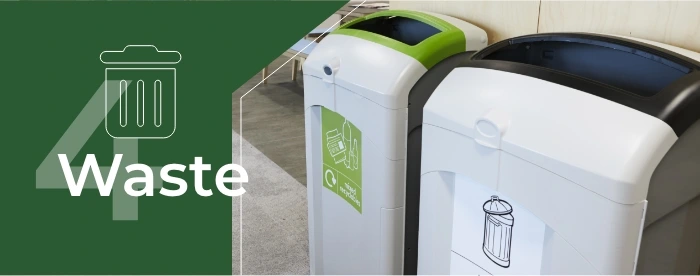
Waste Generation
The waste generated by the print industry in the UK is substantial. Paper and paperboard products constitute a significant portion of the total waste in landfills. According to the Department for Environment, Food & Rural Affairs (DEFRA), the UK generated approximately 10 million tonnes of paper and cardboard waste in 2018. While the recycling rate for paper and cardboard in the UK was around 74% in 2020, a considerable amount of paper still ends up in landfills. This ongoing challenge underscores the need for improved waste management practices and increased recycling efforts.
Another significant environmental concern in the print industry is toner waste. Toner cartridges contain powdered toner, which can contribute to waste when cartridges are replaced or during maintenance procedures. Proper handling and recycling of toner cartridges are essential to minimise environmental impact, as toner powder may contain chemicals that require careful disposal.

Toner and Chemical Use
Traditional printer toners contain various chemicals, including volatile organic compounds (VOCs), heavy metals, and other potentially toxic substances. These chemicals can lead to air and water pollution, posing health risks to humans and wildlife. During production, significant energy and resources are consumed, contributing to environmental degradation.
Additionally, improper disposal of toner cartridges can release these harmful substances into the environment, further worsening pollution and health hazards. The overall impact of toner use emphasises the need for sustainable practices, including recycling to reduce the amount of toner cartridges that end up in landfill.
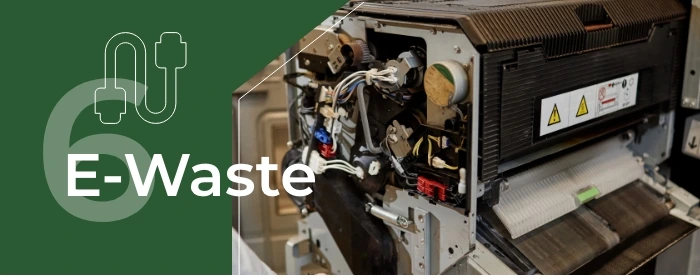
E-Waste from Printing Devices
Printers and other printing devices contribute to electronic waste (e-waste), a growing global problem. The Global E-waste Monitor 2020 reported that 53.6 million metric tons of e-waste were generated worldwide in 2019, with only 17.4% being formally recycled. Printers and cartridges are part of this e-waste, highlighting the need for better recycling and disposal practices.
The Waste Electrical and Electronic Equipment (WEEE) Regulations aim to address the challenges posed by e-waste in the UK, including that from printing devices. These regulations require producers of electronic equipment, including printers and cartridges, to take responsibility for the collection, recycling, and environmentally sound disposal of their products at the end of their life. Compliance with WEEE regulations ensures that e-waste is managed in a way that reduces its environmental impact and promotes the recovery of valuable resources. By supporting WEEE compliance and recycling initiatives, businesses and consumers can contribute to mitigating the global e-waste problem while adhering to regulatory standards for sustainable waste management in the UK.
Want content like this in your inbox?
Sign up and we’ll make sure to keep you up-to-date on new technologies, trends, and promotions.
Strategies for Sustainable Print Solutions
In the pursuit of sustainable print solutions, embracing the principles of the circular economy is key. The circular economy promotes reducing waste and maximising resource efficiency by designing products for longevity and recyclability. By adopting circular economy principles, organisations can aim to keep materials and products in use for as long as possible through strategies like reuse, refurbishment, and recycling. This approach not only minimises environmental impact but also fosters a more resilient and sustainable business model.

REDUCE
Implementing Print Management Software
Implementing print management software such as PaperCut and uniFLOW can significantly reduce waste and improve efficiency by monitoring and controlling printing activities. These solutions offer features like print quotas, print tracking, and secure printing to help limit unnecessary printing and reduce paper use. By promoting double-sided printing and setting print quotas, organisations can cut down on paper consumption and achieve substantial cost savings.
Choosing a Sustainable Print Devices
Choosing a sustainable print device is a crucial step towards achieving environmental sustainability. To identify the most energy-efficient products, look for devices with ENERGY STAR certification and check EPEAT ratings. Review manufacturer specifications for power consumption details and consult third-party reviews for energy efficiency insights. By selecting sustainable print devices from reputable manufacturers, organisations can significantly reduce their environmental footprint and operational costs.
Optimising Print Processes
Encouraging double-sided printing, using print preview, and draft mode can reduce paper and ink usage. Promoting digital alternatives, such as electronic signatures and cloud storage, minimises the need for physical printing. Print management software like PaperCut and uniFLOW can further support these initiatives by providing tools to enforce printing policies and track usage. These process optimisations not only reduce environmental impact but also improve operational efficiency.
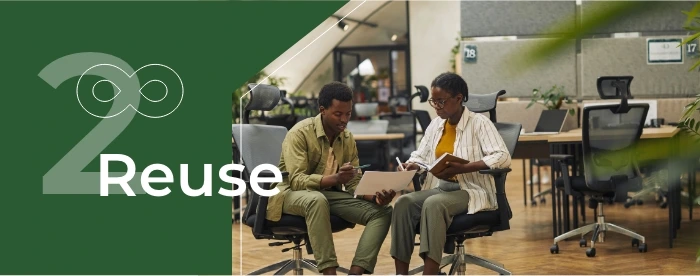
REUSE
Reforestation
Reforestation plays a critical role in offsetting the environmental impact of paper production. Programs like Print Releaf allow organisations to measure their paper consumption and automatically reforest the equivalent paper footprint by planting trees. Print Releaf, for instance, certifies reforestation projects worldwide and provides a transparent way to track and offset paper usage. By participating in such initiatives, businesses not only contribute to global reforestation efforts but also enhance their sustainability credentials by actively reducing the ecological footprint of their printing activities.
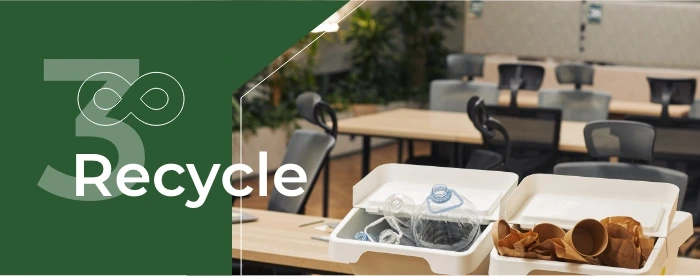
RECYCLE
Recycling and Disposal Programs
Toner recycling is essential in reducing the amount of plastic that ends up in oceans or landfills. We offer every customer the opportunity to recycle their toner cartridges, significantly cutting down on waste. Implementing comprehensive recycling programs for paper, cartridges, and old printers is crucial.
Many print manufacturers also offer comprehensive recycling programs that encompass paper, cartridges, and old printers. These programs are designed to facilitate the proper disposal and recycling of printing materials, ensuring that valuable resources are recovered and reused rather than ending up in landfills.
Regular Audits and Reporting
Conducting regular environmental audits and including sustainability metrics in annual reports help track progress and identify areas for improvement. Transparent reporting can also enhance the organisation’s reputation and customers trust.
Adopting sustainable print solutions is not just a corporate responsibility but a necessity in today’s environmentally conscious world. By understanding the environmental impact of printing and implementing these strategies, organisations can significantly reduce their ecological footprint, achieve cost savings, and contribute to global sustainability efforts. Through continuous improvement and commitment to sustainable practices, businesses can pave the way for a greener future.



